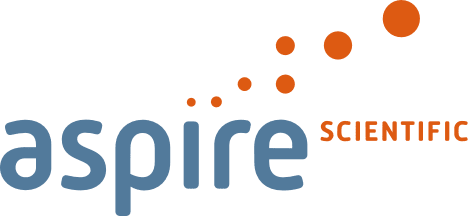The Medical Affairs Professional Society (MAPS) 2024 EMEA Annual Meeting took place in Madrid from 12–14 May. Attendees at the largest medical affairs meeting in Europe had the chance to participate in an interactive programme that explored the meeting’s theme ‘From Action to Impact’ to identify where medical affairs professionals can translate actions into meaningful impacts. If you were in Madrid, you can remind yourself of the key themes with our report from Day 2 below. And if you weren’t able to attend this year’s meeting, why not catch up on what you missed?
Summaries of Day 2
Omnichannel practicalities in medical affairs: a roadmap from plan to performance
KEY TAKEAWAY
- Appropriate metrics and a robust analysis plan are critical success factors for omnichannel programmes.
James Turnbull (Camino), Stephanie Clapham (Theramex), and Alicia Sanders (Pfizer) led an interactive session on the practicalities of omnichannel strategy in medical affairs.
In medical affairs, omnichannel strategy focuses on delivering a cohesive and personalised experience for HCPs across various touchpoints. It is a connected journey that needs audience relevance, connectivity, and measurability.
Current state of play in medical affairs
Turnbull revealed some stark figures from a 2023 survey on omnichannel strategies in pharma, which included 134 pharma employees from more than 50 companies (43% from medical affairs). The results showed a disconnect between current practices and a true omnichannel approach for engaging with HCPs.
Overall, 85% of respondents felt that their current engagement strategy lacked an omnichannel experience. Demonstrating behavioural impact and return on investment of these efforts proved to be a major challenge for two-thirds of the participants. Additionally, 76% admitted to not fully utilising data and insights gained from HCP interactions.
The results showed a disconnect between current practices and a true omnichannel approach for engaging with HCPs.
‘Backwards design’ in omnichannel strategy
Traditionally, HCP engagement has followed a channel-first approach. First, the communication channels to be used are determined and then the messages are crafted to fit those channels. While seemingly straightforward, this approach can lead to disjointed messaging and a less impactful experience for HCPs. Backwards design flips this around by prioritising outcomes: it starts with the desired measurable outcomes and maps the ideal HCP journey across channels to ensure a seamless experience. Then, the channels and tactics are chosen, along with the appropriate metrics to be used.
The power of appropriate metrics
While medical affairs activities generate a wealth of data, choosing the right metrics is crucial for evaluating an omnichannel strategy’s effectiveness. Effective metrics capture the full journey, from initial engagement (emails sent) to long-term impact (treatment adoption). Combining quantitative data (website visits) with qualitative insights (MSL feedback) results in a richer view that informs better decision-making.
Metrics in medical affairs fall into 4 categories, which vary in their value and difficulty to obtain:
- Activity: Reflecting the ‘volume of voice’ – what was done (eg, content created, emails sent, meetings held). While easy to measure, it reveals less about true impact than other measures.
- Reach: This measures ‘share of voice’ – the extent to which the intended audience was reached (eg, meeting attendees, click-through rates, website visits, and downloads). Reach is valuable but does not guarantee engagement.
- Engagement: Going beyond reach, engagement assesses ‘quality of voice’ – the level of interaction with content metrics such as visit requests, question submissions, feedback received, and website scroll depth provide a good sense of audience interest.
- Behaviour: ‘Impact of voice’ – evidence of behaviour change (eg, referral rates, testing adoption, treatment choices, trial recruitment, time to diagnosis). These metrics hold the highest value but can be challenging to track.
Effective metrics capture the full journey, from initial engagement to long-term impact.
Omnichannel strategy in the real world
Clapham shared a case study from Theramex: the aim was to bridge the gap between how HCPs perceived the impact of a rare neurological condition on patients’ quality of life and the reality of the daily struggles patients faced. The team developed a comprehensive omnichannel strategy to address the issue, starting with the overall goal of increasing proactivity in treatment behaviours. They tracked progress using key performance indicators (KPIs), including disease perception tracking. The initial phase of the campaign, centred around congress content, proved highly successful, with a strong email open rate (67%) and conversion to symposium attendance rate (60%). However, follow-up engagement, measured by email click-through rates and guideline downloads, fell short of expectations. The team aims to test alternative content as a follow-up and to compare results.
Medical affairs: taking the lead to innovate digital health
KEY TAKEAWAY
- Medical affairs is well positioned to take a leadership role in developing patient-centric digital health solutions.
Sarah Clark (Novo Nordisk), Emma Vitalini (Amgen), and Bora Erdemli (ZS Associates) led an interactive digital health workshop, guiding participants through the process of transforming digital health innovations from initial concepts into well-defined designs. Teams came up with a digital solution to a scenario and honed their pitching skills by delivering a Dragons’ Den–style presentation on their innovation.
Digital innovation: an ideal fit for medical affairs
Digital health harnesses advanced technologies to improve healthcare delivery and medical practices. Investment in digital health solutions has surged, driven by their potential to reduce costs, expedite processes, and improve clinical trial efficiency. We are now even seeing companies adding digital endpoints to their clinical trials. Digital health presents many opportunities for medical affairs professionals to leverage their expertise. These include co-creating solutions with HCPs and patients, navigating complexities within companies and within the healthcare system, and generating real world evidence to inform best practices.
We are now even seeing companies adding digital endpoints to their clinical trials.
Digital health example: the digital twin concept
Digital innovators are exploring digital twins as a potential tool to create a more personalised and precise approach to medicine. Imagine a virtual replica of yourself, built using your medical records, tests, genetic information, and potentially even sensor data from wearables. These data are used by advanced software to build a virtual model that mimics your unique biology. The digital twin can then be used to simulate different scenarios, such as to predict when drug interventions are needed, identify the most optimal medications for you, and even provide early warnings of potential health conditions.
Workshopping digital innovations
In teams, participants were challenged to develop novel digital solutions to improve patient outcomes in chronic kidney disease (CKD), with the ambitious goal of achieving a 20% reduction in CKD progression to kidney failure by 2027. Five compelling solutions emerged from the workshop, each presented in clear and engaging pitches.
Three of the teams focused on various ways to integrate digital technology into restrooms, enabling precision diagnostics through urine analysis. Another proposed a mobile app that would track activities such as food intake and exercise routines and provide a personalised daily health score. Another team suggested leveraging existing apps, such as Apple Health, to generate a risk assessment tool for CKD, with urine tests being automatically sent to those at high risk.
Empowered for digital health leadership
A live poll during the session revealed that the majority of participants felt only moderately involved in digital health development with their current roles. Armed with practical frameworks, learnings, actionable ideas to integrate into their daily work in medical affairs, and a clearer picture of the current landscape, participants left well equipped to advocate for a more prominent role in shaping the future of digital health solutions.
Imagine a virtual replica of yourself, built using your medical records, tests, genetic information and potentially even sensor data from wearables.
The role of the Country Medical Director – external and internal leadership and IMPACT
KEY TAKEAWAY
- Medical teams have a key strategic role and can improve patient outcomes through effective collaboration with their commercial partners.
Judith Armoni (Sanofi), Jose Chaves Puertas (Pfizer), and Carlos Murillo (Pfizer) took part in a panel debate moderated by Tamas Koncz (Pfizer).
The objectives of the session were:
- to discuss the transition of medical affairs teams from a supportive to a strategic role
- to recognise the changing perspective of the commercial team regarding the role of the Country Medical Director
- to gain insights into how medical teams can demonstrate impact and bring value to organisations.
What is the role of medical affairs in 2024?
The panel highlighted that the role of medical affairs has changed over the past decade. Previously viewed primarily as a supportive function, medical affairs teams are now recognised as key strategic partners, collaborating closely with commercial teams and physicians. In 2024, medical affairs teams play a vital role in pharmaceutical companies, leveraging their expertise to facilitate peer-to-peer discussions, collaborate with regulatory authorities to generate evidence, and, ultimately, contribute to better patient outcomes.
Effective collaboration between medical affairs and commercial teams
Since medical affairs and commercial teams have the same objectives, a collaborative environment should be established that allows for open and constructive discussions. Commercial and medical aspects should not be compartmentalised; instead, there must be a shift towards a more unified approach.
Medical affairs teams are now recognised as key strategic partners, collaborating closely with commercial teams and physicians.
Benefits of mutual education
The panel also noted the benefits of reciprocal learning between medical affairs and commercial teams. Such initiatives allow medical affairs professionals to better appreciate business strategies while commercial teams deepen their understanding of the science. By bridging these knowledge gaps, teams can improve outcomes for patients.
Need for diverse teams
Diversity within teams is paramount. Incorporating individuals from different backgrounds and generations and with various skill sets brings different perspectives and insights to the table and can lead to better decision-making.
What defines a good leader in the pharmaceutical industry?
The panel highlighted that effective medical leadership requires a comprehensive understanding of the scientific content and the ability to lead a team successfully. Influential leaders must earn the trust of their colleagues, foster openness among team members, and lead by example. The ability to inspire colleagues was identified as fundamental to good leadership.
Influential leaders must earn the trust of their colleagues, foster openness among team members, and lead by example.
Innovating through efficiency: real-life applications of generative AI in medical affairs
KEY TAKEAWAY
- Appropriate and responsible implementation of generative AI is key to unlocking its innovative power.
Natasha Hansjee (Roche), Jessica Ingram (Camino), James Turnbull (Camino), and Emma Vitalini (Amgen) led a lively session on the popular topic of generative artificial intelligence (GenAI) tools.
Interactive polling revealed that almost 60% of participants had a bespoke version of ChatGPT, Copilot, or a similar tool in their company. However, only 20% use it regularly and see big benefits. Most participants did not feel that they were getting the best out of GenAI. By the end of the session, almost 70% of participants were keen to explore new GenAI pilot projects or to use it in new ways in their daily work.
Finding the right fit: three routes to implementing GenAI in medical affairs
The group discussed how choosing the right implementation strategy involves multiple considerations:
- Free public GenAI tools provide a low-cost entry point. These tools can be integrated into daily workflows to tackle ad hoc challenges and boost efficiency. However, it is crucial to remember that these tools are not suitable for handling confidential information.
- Custom tools allow for bespoke interfaces to be built that integrate seamlessly with existing workflows. While this approach offers good control and security and can handle confidential data, it requires careful planning and investment. Piloting the solution with a defined scope is recommended before scaling up.
- For tackling broader business challenges, adopting enterprise-level GenAI solutions from established tech providers can be a powerful option. These solutions can lead to significant efficiency gains and process improvements. However, enterprise solutions typically require substantial ongoing monitoring and evaluation to ensure they are delivering optimal value.
Responsible adoption – quality control and ethics
While the buzz surrounding AI tools is undeniable, the speakers acknowledged concerns regarding confidentiality, referencing, bias, and the potential for factual errors (‘hallucinations’) when using GenAI in medical affairs. However, they agreed that these were not necessarily reasons to avoid using AI and that they can be mitigated through quality control measures and thoughtful implementation strategies.
The importance of responsible AI use was underscored by the example of Roche developing bespoke ethical guidelines alongside their in-house GenAI tools. This commitment to ethical development should be a cornerstone of any GenAI implementation.
The panel stressed the importance of thoughtful implementation with regard to any interactions with patients. Confidentiality here is paramount, but it is also important to be mindful of the tone of interactions. How might people feel if they suspect they are receiving a communication written by AI?
Commitment to ethical development should be a cornerstone of any GenAI implementation.
Learning from experience
The speakers shared real world experiences in implementing GenAI strategies:
- Large-scale implementation: At Moderna, GenAI has been integrated holistically across the entire company.
- Iterative development: Ingram shared a commercial case study that highlighted the importance of persevering by refining prompts to improve GenAI output quality.
- Using publicly available data: Turnbull showcased an example of using publicly available congress data to train AI for competitor analysis.
- Clearly defined KPIs: Ingram also provided an example from a recent congress coverage project in which her KPIs focused on both efficiency (budget, speed, repeatability) and value innovation (output quality, booth engagement, healthcare professional involvement).
Importance of cross-function collaboration
Siloed development can be a major hurdle. Proactively sharing knowledge and use cases between medical affairs and allied functions, such as regulatory, can counteract this. Prioritising scalable approaches ensures GenAI delivers value across the organisation, not just for individuals teams.
Siloed development of GenAI strategies can be a major hurdle.
Escape room – let the medical affairs and medical information partnership be the key to your success
KEY TAKEAWAY
- Consistency and collaboration between medical information and medical affairs teams is crucial to providing informed care and ensuring patient safeguarding.
This highly interactive session was led by Fiona Wardle (AbbVie), João Dias (Haemonetics), Rivka Marks-Maran (UCB), and Cristina Rodellas (Novartis).
Effective collaboration between medical affairs and medical information teams
Within the pharmaceutical industry, the medical information department plays a vital role in enquiry management and insights generation. Establishing an effective partnership between medical affairs and medical information is critical for both functions to meet their strategic objectives and achieve consistent processes. To support the development of an effective medical information department, a blueprint has been published as a Standards and Guidance document by a collaboration between MAPS, Medical Information Leaders in Europe (MILE), and Pharmaceutical Collaboration for Transparent Medical Information (phactMI).
Establishing an effective partnership between medical affairs and medical information is critical for both functions to meet their strategic objectives and achieve consistent processes.
Learning objectives
The session aimed to:
- determine how best to align the medical affairs and medical information functions to support both business partners and healthcare stakeholders effectively
- explore strategies for achieving consistency and harmonisation within the context of a global organisation
- gain insights into best practices for establishing an effective and collaborative medical information department.
Escape room scenario
In this interactive session, participants were divided into 4 teams and tasked with generating a proposal for establishing a decentralised global medical information (GMI) group within global medical affairs.
The following possible GMI structures were available for the teams to choose from:
| Structure 1 |
|
| Structure 2 |
|
| Structure 3 |
|
Structure 1 was deemed largely unsuitable due to potential differences in national and regional drug indications and concerns regarding language barriers. Some participants felt that it may be a viable option where the drug label is the same worldwide and may be of interest when budgets are severely constrained.
There was equal enthusiasm for Structures 2 and 3 among the groups taking part in the session. Two groups opted for Structure 2 owing to the perceived additional layers of complexity associated with Structure 3. Conversely, two teams selected Structure 3 as they felt that the lack of involvement of the global team in Structure 2 was a particular weakness.
Overall, it was agreed that there was no one correct answer to this scenario. The optimal GMI structure will be dependent on many factors, including budget, size of company, number of products, and number of indications.
The optimal GMI structure will be dependent on many factors, including budget, size of company, number of products, and number of indications.
From data to action: effectively and efficiently crafting strategic insights in pharma
KEY TAKEAWAY
- AI tools can be used to support the generation of actionable strategic insights.
In this workshop, Lance Hill (Within3), Georgios Tramountanis (Takeda), and Martina Laus (BeiGene) discussed how AI-based technologies can support medical affairs teams in generating actionable strategic insights.
Insights management – current situation
Over the past year, several industry surveys, including those conducted by MAPS, revealed that medical leaders lack confidence in their insights analysis and reporting processes. They also expressed the need for more efficient analysis and reporting capabilities to enable their teams to become more agile in generating strategies informed by insights. While AI-based tools were not widely used to support the generation or reporting of insights, most respondents felt that the use of AI in this setting will increase in the coming year.
These findings align with results from a live poll held during the workshop, where 79% of attendees rated their organisation’s proficiency in insights management as either “Building Mode” or “Needs Improvement”.
Insights management process
The process of insights management can be divided into 4 stages:
- Gathering data and observations
- Analysing data and observations
- Creating insights and appropriate actions
- Communicating insights to achieve actionable outcomes
It was highlighted that insights are more than just data or observations – they are actionable revelations that can drive strategic decisions and impact outcomes.
To support the development of their insights process, attendees were directed to several relevant resources, including the MAPS Insights Focus Area Work Group and a recent MAPS White Paper on this topic.
Insights are more than just data or observations – they are actionable revelations that can drive strategic decisions.
Three generations of insights management
Over the past decade, there have been 3 successive approaches to insights management, with each generation leading to improved efficacy and impact.
- First generation: The first-generation approach had minimal AI involvement. It was a largely manual process, with medical affairs teams evaluating field notes and organising data in spreadsheets and slides. Due to being slow and time consuming, it is no longer practical for large organisations that need to manage increasingly large volumes of data.
- Second generation: The second-generation approach began to incorporate AI into processes to analyse data and identify key trends. Although more efficient than the previous approach, it still required human input to configure, analyse, and communicate insights obtained from automated dashboards.
- Third generation: This generation emerged recently and utilises GenAI tools to provide insights in plain language. The entire process, from data processing to reporting, is streamlined, and the need for manual input is substantially reduced.
Optimising the use of an AI-supported insights process
In a live poll during the workshop, accuracy was highlighted as most respondents’ top concern around the use of AI in insights management. It was noted that transparency is essential for users to understand how AI systems arrive at their conclusions, evaluate the insights provided by the system, and build trust.
The AI Act, recently adopted by the European Union, was also discussed during the workshop. Although this will not directly impact the use of AI in the insights process, it was felt that it was important for medical affairs teams to stay informed about regulatory developments in the AI space.
Considerations for setting up an AI-supported insights process were also discussed, with critical considerations including how to get started, training, who should lead change management efforts, and how to measure success.
Transparency is essential for users to understand how AI systems arrive at their conclusions, evaluate the insights provided by the system, and build trust.
Closing plenary session: Generative artificial/augmented intelligence: AI and the broader challenges on the future of medical affairs within the New
KEY TAKEAWAY
- AI models are predicted to change future working practices in medical affairs by allowing more time to be spent on strategic, value-added work and improving efficiency overall.
Bogdana Coudsy (Sanofi), Bora Erdemil (ZS Associates), Julius Neiser (BCG), and Georgios Tramountanis (Takeda) closed the MAPS 2024 EMEA Annual Meeting by leading an engaging session discussing opportunities for AI to potentially improve innovation and efficiency in medical affairs.
Using generative AI in medical affairs
Erdemil started by noting that GenAI is used to create new ideas/concepts based on its training data and, as such, it can be used to summarise, assist, and create. An audience poll highlighted a high-level of enthusiasm for AI (97% strongly/somewhat agreed it has huge potential for their organisation). Neiser argued that the small amount of scepticism among the audience was not necessarily a negative finding and could be used to help drive improvements in value and impact.
Three key areas where GenAI may provide value in medical affairs
- Increasing efficiency – reducing time spent on simple/mundane tasks (eg, looking for specific data/quotes) and increasing time for more strategic tasks. This may also lower costs by allowing some tasks (eg, medical content generation) to be conducted in-house versus using an external agency.
- Improving productivity – improving the speed to generate critical medical information for sharing with KOLs.
- Improving quality – generating complex information with consistency. It is expected that GenAI will also provide value in the research and development, regulatory, and commercial functions within pharma. An audience poll highlighted that most attendees (53%) think that GenAI is “not very mature” within their organisation, which indicated to the panel a need for taking more risks and generating more examples using AI.
Will GenAI replace medical affairs professionals in the future?
AI technology is not expected to replace medical affairs professionals but will likely change the job role (ie, be a co-pilot), increasing efficiency and productivity. It can be used to automate tedious tasks, thereby allowing more time to focus on strategic initiatives. Overall, GenAI is likely to be increasingly used over time; therefore, it might be appropriate to think about initiating training programmes for existing team members. In addition, some organisations may start to re-assess the ideal profile (ie, capabilities and skill sets) of potential new team members.
AI technology is not expected to replace medical affairs professionals but will likely be a co-pilot, increasing efficiency and productivity.
Specific areas of medical affairs that GenAI could impact
The audience indicated that the areas where GenAI could make most impact include medical information, literature and data analysis, publications, insights, administrative tasks, and strategy. Bora pointed out that although people may be sceptical that GenAI can help develop strategy, it should be feasible as strategy is largely driven by insights.
Potential concerns of using GenAI in medical affairs
An audience poll indicated that the areas of most concern with GenAI were accuracy, hallucinations, data privacy and confidentiality, compliance, and quality. The panel highlighted that these weaknesses were also found in human-generated content and that they should not deter the use of GenAI.
Written as part of a Media Partnership between ISMPP and The Publication Plan, by Aspire Scientific, an independent medical writing agency led by experienced editorial team members and dedicated, industry experts who will deliver medical writing and communications excellence.












